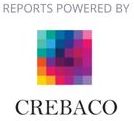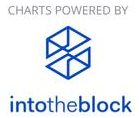
 Cardano
Cardano
Name
Cardano
Summary
-Cardano is a blockchain platform featuring a multi-asset ledger and verifiable smart contracts that intends to be a decentralized application (DApp) development platform.
-The project was started in 2015 by Charles Hoskinson, a co-founder of Ethereum, and it was introduced in 2017.
-The solution is a proof-of-stake cryptocurrency. Scholarly academic research informs about the Ouroboros consensus protocol and its developments.
-It is a 3rd generation, scalable blockchain run by the IOHK foundation. It uses Haskell as the programming language.
Rating
Symbol
ADA
Overview
Cardano is an open-source blockchain originating from peer-reviewed academic research. It does not have a single published white paper but is developed from a collection of academic papers. Cardano sees itself as a “third-generation” protocol, improving on Bitcoin and Ethereum as the first and second generations, respectively. It is named after an Italian Renaissance mathematician, Gerolamo Cardano, and its native currency ADA is named after Ada Lovelace, a 19th-century mathematician sometimes referenced as the first computer programmer.
Cardano is backed by three entities: IOHK, The Cardano Foundation, and Emurgo. IOHK is a blockchain research and development company founded by Charles Hoskinson and Jeremy Wood that is contracted to work on it from 2015 through 2020. The Cardano Foundation is a non-profit organization focused on core development and ecosystem growth. Emurgo is a Japanese venture capital firm. Cardano’s full launch will consist of five phases: Byron, Shelley, Goguen, Basho, and Voltaire. The Byron era arrived in September 2017 with the main net launch of the Cardano blockchain.
During this phase, the chain operated as a federated network that only supported ADA transactions. The next phase, Shelley, launched in July 2020, bringing Cardano’s proposed Ouroboros Proas Proof-of-Stake (PoS) protocol to life. It’s now in the process of rolling out its third phase, Goguen, which will add support for smart contracts and native token issuance. The development teams, IOHK and Emurgo, are researching and building the network’s remaining phases, Basho and Voltaire, in parallel with Goguen.
Historical Price Movement (in INR)
Technology
The Cardano blockchain has two layers: a settlement layer and a computation layer. The Settlement Layer (CSL) serves to settle transactions made by peers in the network with ADA, its native currency. The Computation Layer (CCL) is optimized to support smart contracts and decentralized applications. Developers chose a layered protocol to increase the network’s capacity for protocol changes and soft fork implementations. Cardano is developed in Haskell, and smart contracts are created in Plutus, another programming language that allows for building stricter contracts.
Haskell is the fundamental language for Plutus. It is a programming language used by Cardano for its smart contract creation. Haskell also regulates Marlowe, a domain-specific language for creating Cardano's financial smart contracts.
The supply of ADA is capped at 45 billion. The current ADA supply is roughly 31 billion, leaving 14 billion for network incentives. Cardano incentives compensate for the network’s decrease in monetary expansion. Incentives increase as network use increases.
Cardano will use a Proof-of-Stake (PoS) consensus mechanism called Ouroboros once it reaches the “Shelley” era. Ouroboros consensus aims for improved network security and modularized design. Its modularization allows network delegation, sidechains, and light client data structures. Ouroboros design Ouroboros consensus is determined by slot leaders elected by token holders with a sufficient stake in the network. Slot leaders operate in epochs to listen for and confirm transactions to produce blocks approved by input endorsers. A Cardano input endorser is the second set of stakeholders that verifies transactions included in blocks. It’s believed this design is scalable since the network can increase the number of slots per epoch and run multiple epochs across the network simultaneously.
Use of Native tokens in the ecosystem
Cardano's native cryptocurrency, ADA, may be used to facilitate blockchain transactions and transfer value to other users. On the Cardano network, it's also utilized for staking and paying transaction fees.
Founders
16%
Investors
84%
Volume (as of 21st March 2022)
$953,271,060
Total Supply
34220542617
Circulating Supply
33.71B ADA
Crowd sales (if possible)
NA
Country
Switzerland
Name of Organization
Cardano Foundation
Year Incorporated
2015
Registered Address
Cardano Stiftung, Dammstrasse 16, Zug, 6300, Switzerland
Dispute Resolution and Governing Law
Switzerland
Country Risk Assessment
A1
Founding Team
| Name | Designation | Education | Experience |
| Charles Hoskinson | CEO, Founder | Hoskinson attended Metropolitan State University of Denver and University of Colorado Boulder to study analytic number theory. | 15 Years |
| Jeremy Wood | Co-Founder, CSO | Rutgers UniversityBA in Economics/Accounting1986 | 22 Years |
| Romain Pellerin | Chief Technology Officer | National Conservatory of Arts and CraftsPhD in Computing: distributed systems, mobility, ubiquitous applications2009 | 16 Years |
| Jeff Pollack | Chief Financial Officer | Rutgers UniversityBA in Economics/Accounting1986 | 19 Years |







